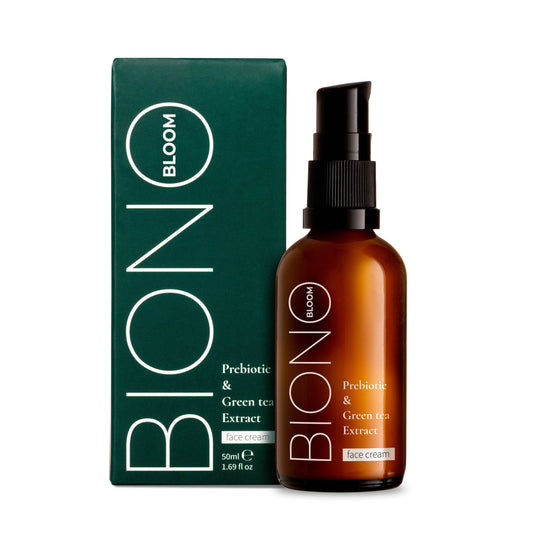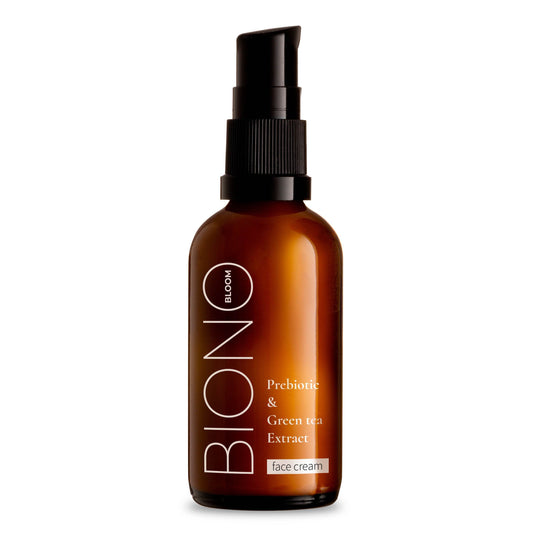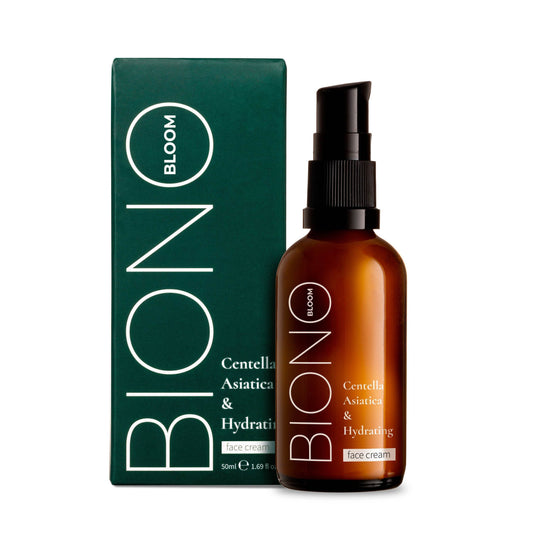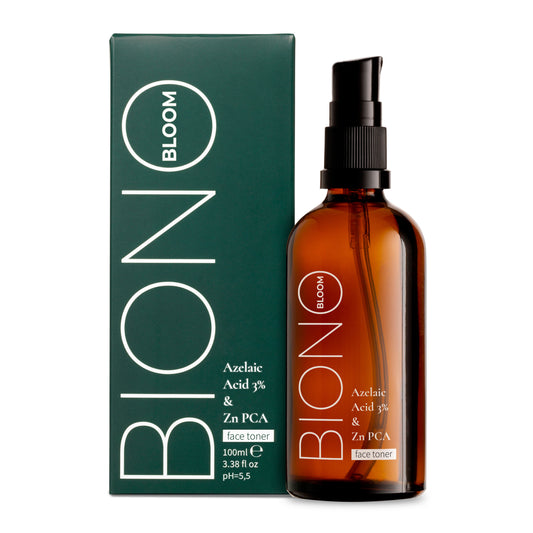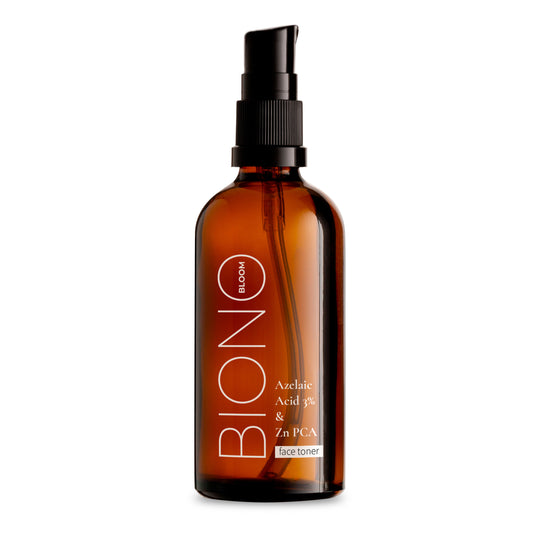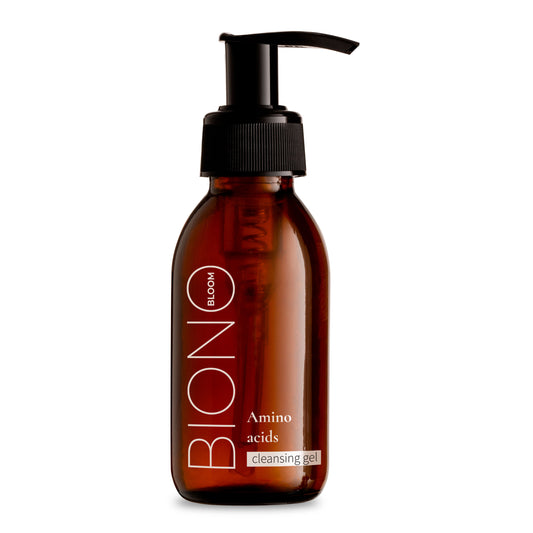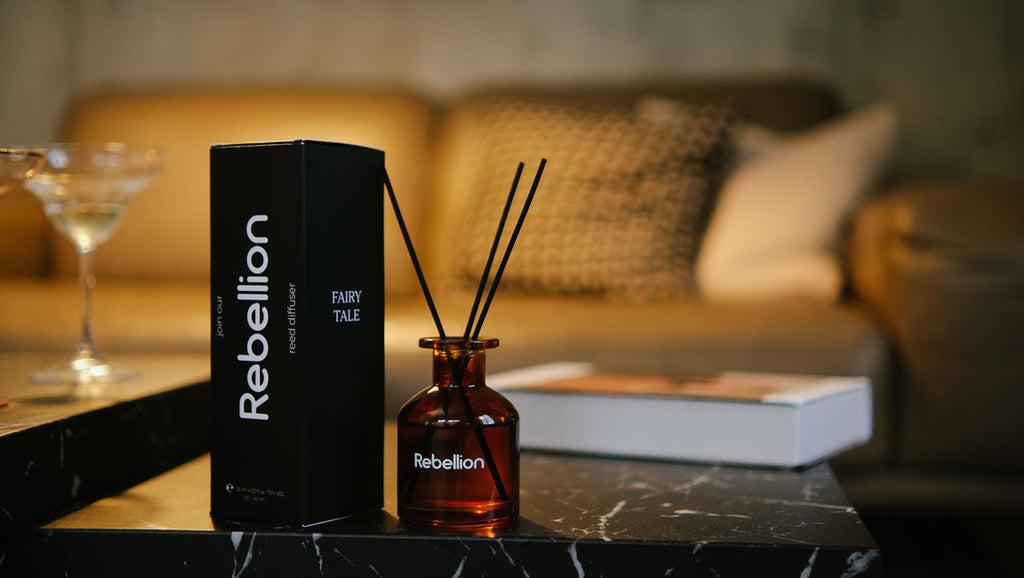
Salicylic acid for face reviews: user experiences and expert recommendations
Share
Salicylic acid for the face has earned a reputation as one of the most effective ingredients in the fight against problem skin. This beta-hydroxy acid component is actively used in cosmetology due to its ability to deeply cleanse pores and eliminate imperfections. Numerous user reviews confirm the high effectiveness of salicylic acid with regular use, but it is important to understand the specifics of its use and possible side effects.
Positive opinions about salicylic acid for the face
Most users notice a quick positive result from using salicylic acid for the care of problematic skin. Its effectiveness in the fight against blackheads and enlarged pores is especially often mentioned. Regular use of products with this ingredient helps to significantly reduce the oiliness of the skin and give it a healthy matte look.
Users with combination skin particularly appreciate the ability of salicylic acid to target problem areas without drying out normal areas. Reviews indicate noticeable improvement in skin texture after just 2-3 weeks of regular use. Many note a reduction in the number of inflammatory elements and an overall improvement in the condition of the epidermis.
Special attention in reviews is paid to the preventive effect of salicylic acid. Users note that regular use of this ingredient prevents the appearance of new pimples and blackheads. This is especially important for people with hormonal disorders who are prone to periodic rashes on the face.
Critical Opinions and Possible Side Effects of Salicylic Acid
Despite the generally positive assessment, some users report negative experiences with the use of salicylic acid on the face. The most common are irritation and excessive dryness of the skin, especially at the initial stage of use. Such reactions are typical for sensitive skin or when the recommended concentration of the active ingredient is exceeded.
Reviews point to the importance of gradually introducing salicylic acid into skin care. Many users recommend starting with low concentrations and infrequent use, gradually increasing the frequency of use. Improper use can lead to a violation of the skin's protective barrier and aggravate problems.
Some reviews contain warnings about photosensitivity when using salicylic acid. Users emphasize the need for mandatory use of sunscreen, because the acid can increase the sensitivity of the skin to ultraviolet radiation. Ignoring this recommendation can lead to discoloration or burns.
Salicylic acid for the face opinions of cosmetologists and dermatologists
Professional beauticians in their reviews confirm the effectiveness of salicylic acid in the treatment of acne and the prevention of rashes. Experts especially emphasize its ability to penetrate pores and dissolve keratin plugs, which makes it irreplaceable for people with increased sebum production. Dermatologists recommend salicylic acid as a first-line drug in the treatment of mild forms of acne.
Medical experts in their opinions emphasize the importance of choosing the right concentration of salicylic acid depending on the type and condition of the skin. For daily home care, concentrations of 0.5% to 2% are recommended, while professional treatments may use higher concentrations under the supervision of a specialist.
Cosmetologists note the special effectiveness of salicylic acid in combination with other active ingredients. Properly selected combinations can significantly enhance the therapeutic effect and reduce the risk of adverse reactions. Experts recommend an individual approach to the selection of salicylic acid products.
Comparative Opinions: Salicylic Acid vs. Other Active Ingredients
User reviews often compare salicylic acid to other popular ingredients for problem skin care. It is especially often compared to glycolic acid, retinol, and benzoyl peroxide. Most reviews indicate that salicylic acid is more gentle than alpha-hydroxy acids.
Users note that salicylic acid is better tolerated by sensitive skin compared to glycolic or lactic acid. At the same time, it is highly effective in the fight against blackheads, making it an optimal choice for people with comedogenic acne. Reviews confirm its advantages for oily and combination skin.
Comparative reviews also indicate a faster visible result from salicylic acid compared to retinoids. While retinol may provide a more comprehensive anti-aging effect, salicylic acid clears up current pore and rash issues faster. Many users successfully combine these ingredients in their skincare routine.
Recommendations for choosing salicylic acid products based on reviews
Analysis of numerous reviews about salicylic acid for the face helps to formulate practical recommendations for choosing the optimal means. Users most often choose tonics and serums with a concentration of 1-2% for daily use. Such forms provide even application and controlled dosing of the active ingredient.
Reviews show the importance of choosing products with additional moisturizing and soothing ingredients. The most positive impressions are left by products containing hyaluronic acid, niacinamide or panthenol with salicylic acid. Such combinations minimize the risk of irritation and provide comprehensive care.
Users recommend paying attention to the pH of the formula when choosing products with salicylic acid. The optimal pH level for maximum effectiveness is 3.5-4.0. Reviews confirm that products with a properly balanced pH show better results and are less irritating to the skin, which is especially important for long-term use.
Conclusions on the effectiveness of salicylic acid
Analysis of user reviews and specialist recommendations confirms the high effectiveness of salicylic acid in the care of problematic facial skin. This ingredient is rightly considered one of the best solutions in the fight against acne, blackheads and excessive skin oiliness. Proper use of salicylic acid can significantly improve the condition of the skin and prevent the appearance of new problems.
The success of using salicylic acid depends on the right choice of concentration, form and mode of application. It is important to take into account the individual characteristics of the skin and gradually introduce this ingredient into care. When following the recommendations and using it carefully, salicylic acid becomes a reliable ally in achieving healthy and beautiful facial skin.
Salicylic Acid for Face How to Use: A Complete Guide to Proper Use
Properly applying salicylic acid to your face is key to achieving the desired results without unwanted side effects. This powerful beta-hydroxy acid ingredient requires a competent approach to use, especially for those new to problem skin care. Understanding the basics of using salicylic acid will help maximize its benefits and minimize the risk of skin irritation or damage.
Preparing the skin before using salicylic acid
Before you start using salicylic acid on your face, it is essential to properly prepare your skin for the procedure. The first step is to thoroughly cleanse your face with a mild cleanser that does not contain abrasive particles or aggressive surfactants. This will ensure optimal absorption of the active ingredient and reduce the risk of irritation.
It is important to dry your skin completely after cleansing, as moisture can reduce the effectiveness of salicylic acid or cause an uncontrolled reaction. It is recommended to wait 10-15 minutes after washing before applying a salicylic acid product. This time will allow your skin to return to its natural pH and prepare to receive the active ingredient.
Before using salicylic acid for the first time, you must patch test a small area of skin. Apply a small amount of the product to the inside of your wrist or behind your ear and observe the reaction for 24 hours. The absence of redness, itching, or irritation indicates that the product is safe to use.
Technique for applying salicylic acid to the face
The proper technique for applying salicylic acid to the face depends on the type of product and the concentration of the active ingredient. For toners and lotions, use a cotton pad, spreading the product evenly over the entire face or only on problem areas. Avoid the areas around the eyes and lips, as this skin is more sensitive to acids.
When using serums or gels with salicylic acid, apply them to problem areas or apply a thin, even layer to the entire face. Using massaging movements with your fingers, gently massage the product until it is completely absorbed. It is important not to overdo it with the amount of product - a few drops or a pea the size of a grain of rice is usually enough.
After applying salicylic acid, wait 10-20 minutes before using other skincare products. This time is necessary for the ingredient to activate and begin working. Do not rinse off salicylic acid unless instructed to do so - most products are designed to be long-lasting on the skin.
How often should you use salicylic acid for different skin types?
Determining the optimal frequency of using salicylic acid on your face depends on your skin type, its current condition, and the concentration of the active ingredient in the product. For sensitive and dry skin, it is recommended to start with 1-2 times a week, gradually increasing the frequency to daily use if well tolerated.
Oily and combination skin usually tolerates salicylic acid better, so you can start by using it every other day. If there is no irritation, you can increase the frequency to daily use. However, even oily skin may require an adaptation period, especially when using high concentrations of salicylic acid.
Normal skin with periodic rashes responds best to using salicylic acid 3-4 times a week. This regimen provides a preventive effect without excessive impact on healthy skin areas. It is important to observe the skin's reaction and adjust the frequency of use according to its needs.
Choosing the concentration of salicylic acid for home use
For those new to using salicylic acid on the face, it is recommended to start with the lowest concentrations available - 0.5-1%. Such measures provide a gentle introduction of the skin to the action of beta-hydroxy acids and minimize the risk of negative reactions. Gradual increase in concentration allows the skin to adapt and achieve maximum effectiveness.
A concentration of 1-2% salicylic acid is considered optimal for daily home care of problematic skin. Such agents effectively deal with most problems, including blackheads, mild acne and excessive oiliness. They provide noticeable results with regular use without significant risk of irritation.
Higher concentrations of salicylic acid (3-5%) are usually used in professional products or for spot treatment of individual problem areas. Such concentrations are not recommended for daily use at home without consulting a dermatologist or experienced cosmetologist.
Combining salicylic acid with other skincare products
Properly combining salicylic acid for the face with other active ingredients can significantly increase the effectiveness of care. The safest and most effective are combinations with moisturizing ingredients such as hyaluronic acid, glycerin or ceramides. These substances help maintain the skin's water balance and prevent excessive dryness.
It is successful to combine salicylic acid with niacinamide, which enhances the anti-inflammatory effect and helps control the sebaceous glands. These ingredients can be used in one treatment or alternately. It is important to avoid simultaneous use of salicylic acid with other exfoliants, such as glycolic acid or physical peels.
A must-have for your salicylic acid skincare routine is a quality moisturizer and sunscreen. The acid can temporarily increase your skin’s sensitivity to UV radiation, so using SPF becomes especially important. It is recommended to choose non-comedogenic moisturizers that don’t clog pores.
Proper completion of the care procedure
After applying salicylic acid to your face, it is important to properly supplement your skincare routine with the right products. Moisturizer should be applied 15-20 minutes after the salicylic acid, when it has time to absorb and start working. Choose light, non-comedogenic textures that will not interfere with the active ingredient.
Morning procedures using salicylic acid must necessarily end with the application of a sunscreen with an SPF of at least 30. This will protect the skin from possible photosensitization and prevent discoloration. Evening procedures can be supplemented with more nourishing creams or oils for skin regeneration.
If you experience any signs of irritation, such as persistent redness, peeling, or discomfort, temporarily discontinue use of salicylic acid and focus on soothing your skin. Use mild, hypoallergenic products and consult a dermatologist if necessary.
Maximum effectiveness when used properly
Properly applying salicylic acid to your face requires patience, consistency, and attention to your skin’s reactions. Following the recommendations for concentration, frequency of use, and application technique will ensure maximum effectiveness of this powerful ingredient. It’s important to remember that results appear gradually, and the duration of treatment can be anywhere from 6 to 12 weeks.
An individual approach to the use of salicylic acid and the willingness to adjust care according to the needs of the skin is a guarantee of success in achieving the desired results. Regular use in combination with proper care will help significantly improve the condition of problematic skin and maintain its healthy appearance for a long time.
Salicylic acid for pimples reviews: effectiveness and treatment results
Salicylic acid from pimples has gained recognition as one of the most effective over-the-counter remedies for acne of varying degrees of severity. Numerous clinical studies and practical user experiences confirm its ability to quickly and effectively remove existing rashes and prevent new ones from appearing. The mechanism of action of this beta-hydroxy acid ingredient allows it to affect the main causes of pimples, making it irreplaceable in the comprehensive treatment of acne.
Mechanism of action of salicylic acid against pimples
Salicylic acid works for acne thanks to its unique ability to penetrate deep into pores and dissolve keratin plugs, which are the main cause of blackheads. Unlike alpha hydroxy acids, which work mainly on the surface of the skin, salicylic acid has lipophilic properties, which allows it to penetrate sebum and cleanse pores from the inside.
The anti-inflammatory properties of salicylic acid are particularly important in treating inflammatory forms of acne. It reduces redness and swelling around the affected pores, accelerates the healing of existing pimples, and prevents the spread of infection to neighboring areas. Regular use of salicylic acid helps normalize keratinization processes and reduces excessive exfoliation of epidermal cells.
The keratolytic effect of salicylic acid gently exfoliates dead skin cells, preventing pores from becoming clogged and new blackheads from forming. This process is gradual and controlled, unlike aggressive mechanical cleansing, which can damage the skin and provoke new inflammation.
The effectiveness of salicylic acid on different types of pimples
User reviews attest to the special effectiveness of salicylic acid on comedogenic pimples. Blackheads and whiteheads respond to treatment with this ingredient the fastest, often showing noticeable improvements after just 1-2 weeks of regular use. Salicylic acid's ability to dissolve sebaceous plugs makes it an ideal choice for people with increased sebum production.
In inflammatory forms of acne, salicylic acid shows somewhat slower but stable results. Papules and pustules decrease in size and intensity of inflammation within 3-4 weeks of treatment. It is important to note that salicylic acid not only treats existing pimples, but also effectively prevents the formation of new inflammatory elements.
For the treatment of deep cystic acne, salicylic acid can be used as part of a complex therapy. Although it may not provide complete healing in severe forms of acne, its anti-inflammatory properties help reduce discomfort and speed up the healing process. In such cases, it is recommended to combine it with other active ingredients or medical preparations.
Speed of achieving results in the treatment of pimples
Most users notice the first positive changes from using salicylic acid from pimples within the first week of use. Reduction of skin oiliness and improvement of its texture become noticeable after 3-5 days of regular use. This is associated with a rapid keratolytic effect and normalization of sebaceous glands.
A noticeable reduction in the number of blackheads and small pimples is observed after 2-3 weeks of treatment with salicylic acid. This period is necessary for a full cycle of epidermal cell renewal and cleansing of clogged pores. It is important not to stop the treatment at this stage, because the maximum effect is achieved with long-term use.
Stable long-term results from salicylic acid against pimples usually appear after 6-8 weeks of regular use. This period is recommended as a minimum course of treatment to assess the effectiveness of the therapy. Many users continue to use salicylic acid as a preventive measure after achieving lasting improvement.
Comparison of effectiveness with other anti-acne ingredients
Clinical studies show that salicylic acid for acne is as effective as benzoyl peroxide for treating mild to moderate acne. However, salicylic acid is better tolerated by sensitive skin and is less likely to cause contact dermatitis. This makes it an optimal choice for people who cannot tolerate more aggressive acne ingredients.
Compared to topical retinoids, salicylic acid shows faster initial results, especially in reducing the number of comedones. However, retinoids provide a more comprehensive effect on the acne-producing processes and may be more effective in severe forms of the disease. Many dermatologists recommend combination therapy for maximum effect.
Compared to alpha hydroxy acids, salicylic acid shows better results against pimples due to its ability to penetrate pores and affect sebaceous glands. Glycolic and lactic acids are more effective in improving the overall texture of the skin, but less specific in treating acne. The choice between these ingredients depends on the main needs of the skin.
Optimal Salicylic Acid Pimple Treatment Regimens
For the treatment of mild acne, it is recommended to use salicylic acid from pimples in a concentration of 1-2% once a day, preferably in the evening. This regimen provides effective pore cleansing without excessive skin irritation. If well tolerated, the frequency can be increased to twice a day.
For moderate acne, more intensive therapy with higher concentrations of salicylic acid or in combination with other active ingredients may be needed. Combinations with niacinamide, zinc or azelaic acid can significantly increase the effectiveness of the treatment. It is important to introduce additional ingredients gradually to avoid irritation.
For the prevention of acne recurrence, long-term use of salicylic acid in a low concentration (0.5-1%) 2-3 times a week is recommended. This maintenance regimen allows you to control the condition of the skin and prevent the appearance of new rashes. Regular preventive use is especially important for people prone to hormonal acne.
Effective in long-term acne control
Long-term reviews of salicylic acid from pimples confirm its effectiveness not only in treating active inflammation, but also in maintaining long-term remission. Regular use of this ingredient helps to keep pores clean and prevents the formation of new comedones, which is crucial in the chronic nature of acne.
Users often find that salicylic acid helps control seasonal acne flare-ups, especially those related to hormonal changes or increased stress. Regular use creates a sort of “shield” against the triggers of breakouts. This makes it a valuable tool in a long-term acne-fighting strategy.
Studies confirm the safety of long-term use of salicylic acid at appropriate concentrations. Unlike some other acne treatments, there is no tolerance to it and its effectiveness remains consistent with regular use. This means it can be used as part of a daily skincare routine for years.
Comprehensive impact on skin health
Salicylic acid from pimples has an effect that goes beyond treating acne, positively affecting the overall condition and appearance of the skin. Its regular use helps to improve skin texture, reduce the appearance of pores and give the complexion a healthier, more even tone.
The anti-inflammatory properties of salicylic acid help not only treat pimples but also soothe other inflammatory skin conditions. Users often note an overall calming effect on the skin and a reduction in the tendency to irritation. This all-encompassing effect makes salicylic acid a valuable ingredient not only for those with acne, but also for anyone looking to improve the overall health of their skin.
Salicylic Acid What to Combine With: The Best Combinations of Ingredients
The right combinations increase the effectiveness of salicylic acid and minimize the risk of irritation. Understanding which ingredients work harmoniously with salicylic acid and which should be avoided is key to creating a safe and effective skincare routine. Modern cosmetology offers a wide range of active ingredients that can enhance or weaken the effects of salicylic acid, so knowledge of their properties is essential for every user.
Safe and effective combinations with salicylic acid
Salicylic acid is best combined with niacinamide, which is one of the most compatible ingredients. Niacinamide not only does not interfere with the action of salicylic acid, but also enhances its anti-inflammatory effects and helps regulate sebum. These two ingredients can be used at the same time without the risk of neutralizing their effects.
Hyaluronic acid is the perfect partner for salicylic acid, compensating its potential drying effect.

